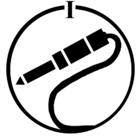I have a play bar connected to two play ones in one room and a play 3 in another room. The play 3 is connected to a WiFi router. What the easiest way to connect a turntable to my system and what would I need.
Turntable.
 +1
+1Best answer by lohr500
Hi @Baboon281, if you only want to connect a turntable and have no intention of expanding your system using either a Sonos Five speaker and/or you don’t want to add any traditional passive speakers to your system, then all you need is a Port.
If you like the idea of adding another Sonos speaker then a Five will allow you to connect a turntable directly to it using a wired connection. But this can limit the placement as your turntable needs to be reasonably close to the Five to facilitate the wired connection.
An Amp would be used if you wanted to drive conventional passive speakers and play Sonos content through them. A turntable can also be connected to the Amp.
A Port will allow you to connect a turntable and so long as the Port is in wifi range or connected via ethernet, it will allow you to position the turntable wherever you need.
On any of the solutions, once installed, you can then play the turntable output to any or all of your other Sonos speakers. From your initial question I am guessing that the Play Ones are being used as surround speakers for the Playbar in a home theatre setup. If you play the turntable through the home theatre set up the Playbar and Ones will handle the turntable sound in the same way as other music sources.
Two other things to consider :
Firstly, irrespective of using a Five, Amp or Port to connect a turntable, the turntable needs to have a built in pre-amp stage to provide a Line Out level signal. Some turntables only output at Phono level. If your turntable doesn’t have a pre-amp stage, you can buy an external pre-amp for around £25/$33.
Secondly, if you want to add the turntable on a budget, you could look around for a used Sonos Connect. The Port replaced the Connect. To use the latest S2 version of the App though, the Connect needs to be newer than mid 2015. Earlier versions won’t work with S2. To be safe, look for one with a serial number starting 16xx. Of course, buying used is not without risk as you won’t have a warranty or the latest support.
Enter your E-mail address. We'll send you an e-mail with instructions to reset your password.


